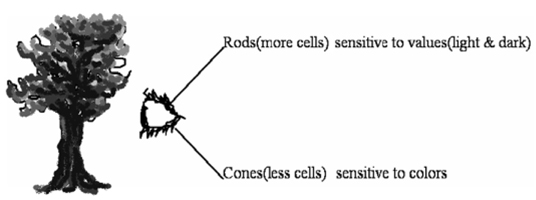What is Design?
The influence of color on Industrial Design is one of the most significant aspects. Industrial Design has contributed in the lifestyle of the modern era and changed the societies across the globe. Mass Production, Mass Communication and Mass Transportations are Three Canons of the modern society. These three canons are the corner stone of any developed nation. At this stage, it is important to understand the philosophy of design and its relevance in our society.
Design reflects discipline, ethics, and taste of a community and national heritage. Design activity can be one of the most important indicators of the social growth and economy. Designers cannot stay away from the sentiments and feeling of the mass for which they create. Understanding the complex societal fabric is perhaps the most challenging area for the designer. Creativity and technology synthesizes to produce things for the mass. Design combines usefulness and meaning in the form of practical objects that can also reflect user’s identities and aspirations through forms and patterns. Creativity is the core of design profession. Concept of a design product starts with the question- who is my target consumer, what is their aspiration, what is their cultural background, the nature of usefulness, etc.
(Read more: Johannes Itten, The Art of Color: the subjective experience and objective rationale of color; New York: Van Nostrand Reinhold
http://en.wikipedia.org/wiki/Industrial_design ; June 1, 2012)
In the earlier topic we have discussed in detail about the science of color (Color Principle). However, before starting to discuss the application of color in art and design we would brush through the elements of color once again so that it becomes easy to relate to the topic.
Color has always attracted human being from natural experience. Color is the element of art that is produced when light, striking an object, is reflected back to the eye. Technically, the eye 'sees' and the brain 'perceives'. In this course we want to 'learn to see' more and as well 'perceive more'. Brain perceives through the process of assimilation by seeing things through eyes. Color plays one the most important roles in aesthetic appreciation of a creative work in the field of art and design.
The retina or back parts of the eye on which the images are focused contain two kinds of cells- rods and cones.
 |
| Plate1. Eye sees and Brain Perceives |
We have more ‘rods’ compare to ‘cells’. Because of the above reasons we are able to identify an object even in dark while not able to identify the colors. It is found that there other living beings (birds) who have number of cones and can identify more range of colors compare to human beings. Therefore, before we discuss more about the relationship between color and design we would like to refresh in short the earlier topics on color hue, intensity and value so that the discussion becomes relevant. |